No.100 Bachmann GWR 4-4-0s and gradients
I was asked this weekend how both my Bachmann Dukedog (9017) and my City performed on gradients. Straight out of the box, the answer is 'With difficulty'.
Bachmann Dukedog (9017) on local train
9017 is a recent addition to the layout and after marvelling
at the detailing and the super smooth performance I was prepared to overlook
the fact that my model seemed incapable of hauling any load uphill. 9017 was
relegated to shuttling between two stations on my branch line - on the level.
I would investigate further.
The front bogie detail
Standing the locomotive on a flat surface highlights the
likely problem. I haven’t counted the rivets but I am guessing that Bachmann
have made a very good attempt at modelling the outside frame to the front bogie
with the result that the clearance between the bogie and mainframe is really
rather tight.
Underside of 9017 showing the mounting for the front
bogie
Removing the bogie reveals the mounting boss on the
underside of the chassis.
9017 bogie with Bachmann fixing bolt, spring and
washer
The bogie is held in place by a threaded bolt which also
carries a spring and washer. In use the spring and washer are compressed
between the top of the bogie and the mounting boss. With my locomotive standing
on a flat surface I was unable to press the front of the engine down on to the
bogie suggesting in my mind that front of the chassis was in effect resting on
the bogie and that in all probability the front driving wheels were being
lifted from the track. To test the theory I reattached the bogie minus the
spring and washer. Yes the locomotive would now press down onto the bogie.
However the engine appears to be rather front heavy and without any support over
the bogie the engine has a tendency to tip forwards lifting the rear driving
wheels.
Plan B – shortened spring on the right
I think the bogie still needs some springing and after a
little trial and error I came up with a shortened spring cut from a ball point
pen. I also removed the washer – I don’t think there is space for it.
.
Success, 9017 would now haul two old Mainline B Set coaches
all the way up my nominally 1 in 40 grade branch line.
For the record, the B Set is made up from Mainline coaches
fitted with metal wheels and close coupled with Bachmann Mini (long) couplings
using the existing fixings.
.
I had wanted a model of City of Truro for some time. Back in
the 1980s I had started to add wire handrails to an Airfix kit. I had also
purchased a spare Tri-ang bogie from Lord of the Isles for the project.
.
Back in
2010 when City of Truro became available from the National Railway Museum it
was just a question of timing and how to break the news to my wife.
City of Truro – kit of parts
I think City of Truro is a superb model and it glided around
smoothly on the level. It did not like my ‘up and down’ layout. However when
not ‘posing’ in the shed yard it substituted for my 2251 on the branch line
hauling a couple of coaches.
Underside of the City showing the mounting for the front
bogie
Bachmann have used the same construction pattern for both
the City and the Dukedog.
City bogie with Bachmann fixing bolt, spring and
washer
To improve haulage capacity I would reduce the spring load
from the bogie. There appears to be more space between the underside of the
City chassis and the top of the bogie, compared to the 9017 and I have retained
a washer.
City - shortened spring on the right
I am pleased. City of Truro will now handle four coaches,
both Bachmann Mk1s or Colletts, taking in the 1 in 60 gradient on the mainline
and the 1 in 55 gradient on the reversing loop with only a small increase in
power required from the controller to get up the slopes.
To answer a specific question the load was increased to five
Bachmann Mk1s. With lots of wheel slip it was ‘just’ possible to restart this
increased length of train at the top of the 1 in 60 grade. However four coaches
looks in keeping with the engine and that will be its limit on my layout.
Minus the keeper plate
For those of you who have not looked inside the City (or the
Dukedog) the wheels are all geared like on a motor bogie. 9017 even includes
brass bearings. I am guessing that this arrangement will stop rough running due
to faulty quartering.
Wheel collectors
I have included a view of the copper collectors. The 4-4-0
wheel arrangement, particularly with large driving wheels like on the City
seems to me to be rather sensitive to how the chassis is ‘set up’. If the
copper collectors are not all equally sprung there might be a temptation for
the body of the engine not to be perfectly aligned with the track. My City had
a tendency to swing from side to side at the front, which was accentuated when
the spring load was reduced. I carefully rotated the front wheels, 45 degrees
at a time noting the crank position and measuring the distance across the flanges.
The measurements varied between 14.85 and 15.05mm. Gentle pressure squeezing
the wheels together at the widest point seems to have been effective at
reducing the problem.
City of Truro on the mainline
Again for the record the Bachmann Collett coaches are
running on metal wheels and are close coupled by repositioning the original
couplings slightly inboard. The corridor connectors are fabricated from black
cartridge paper as described elsewhere on my Blog.

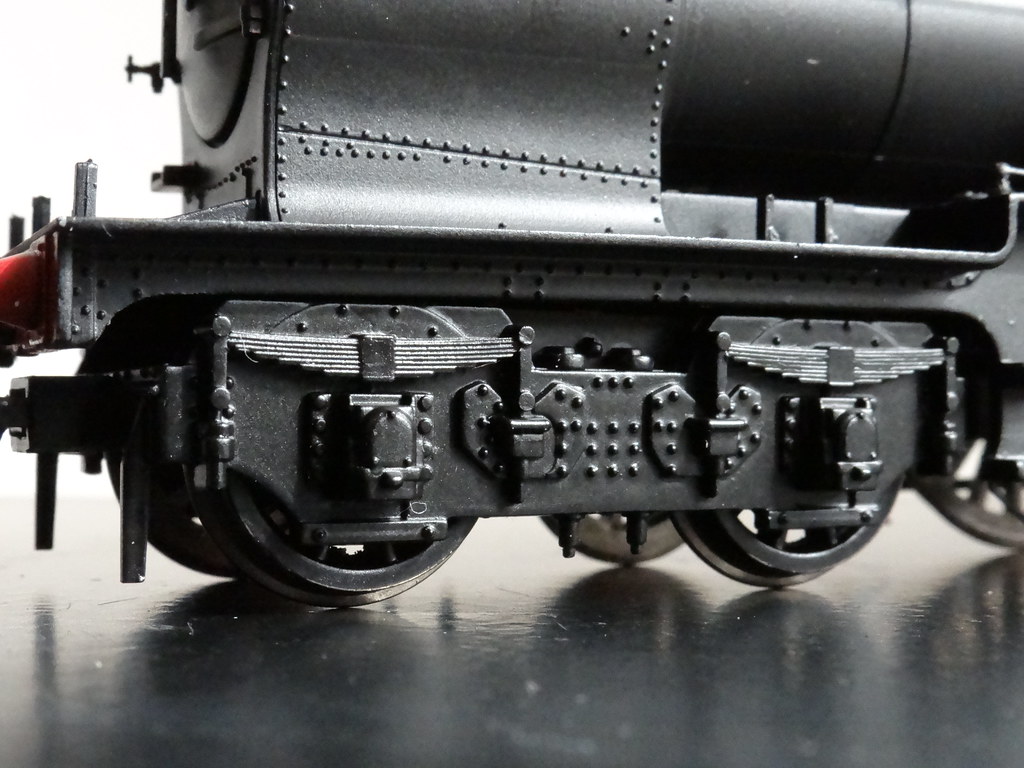
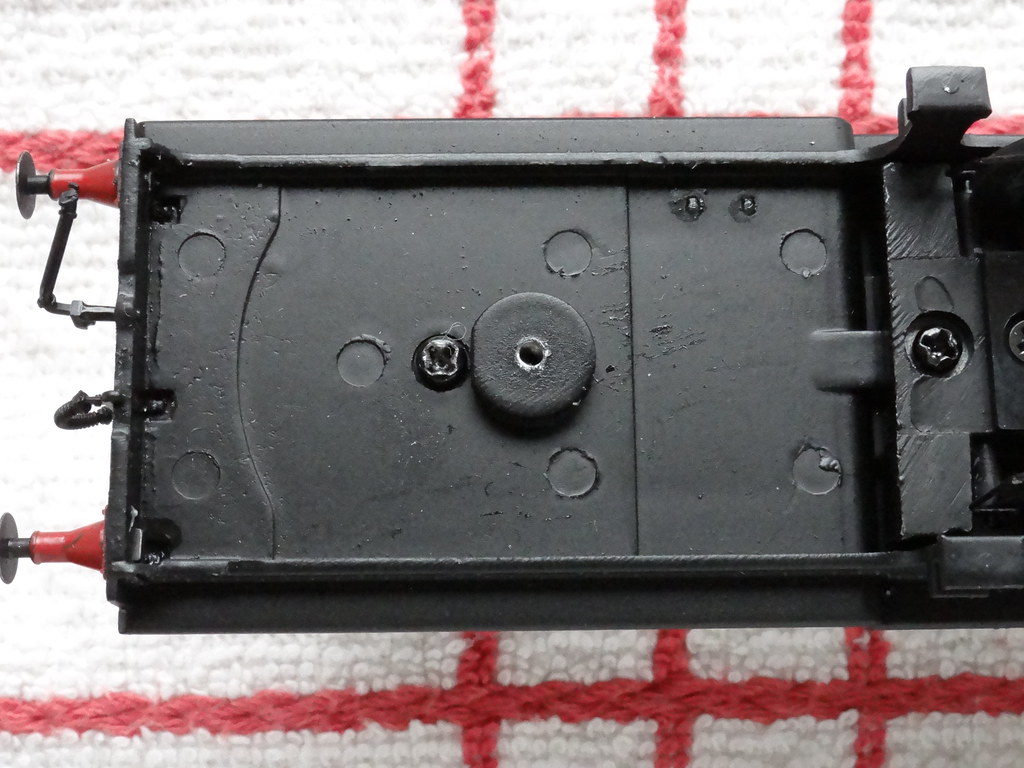
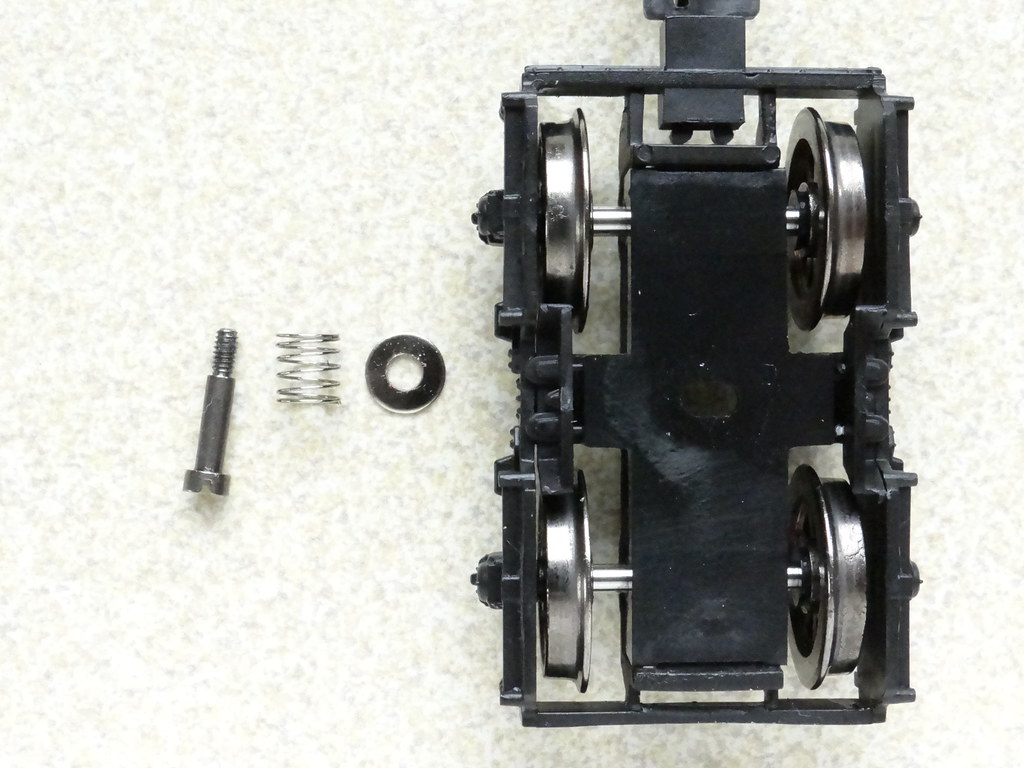
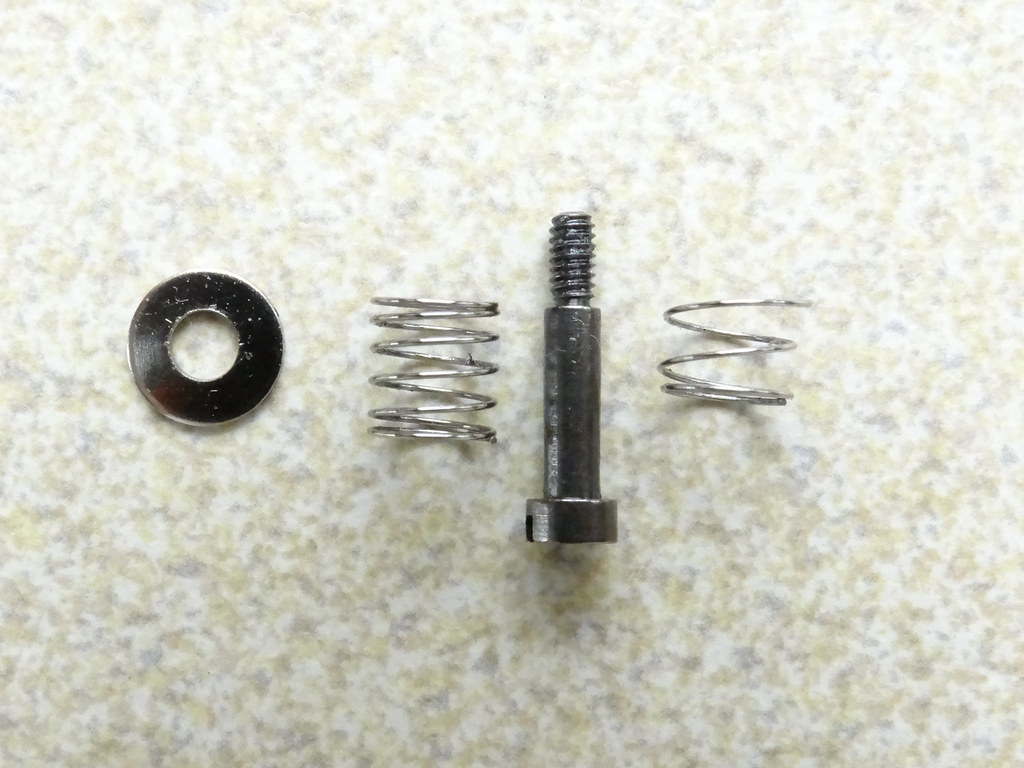
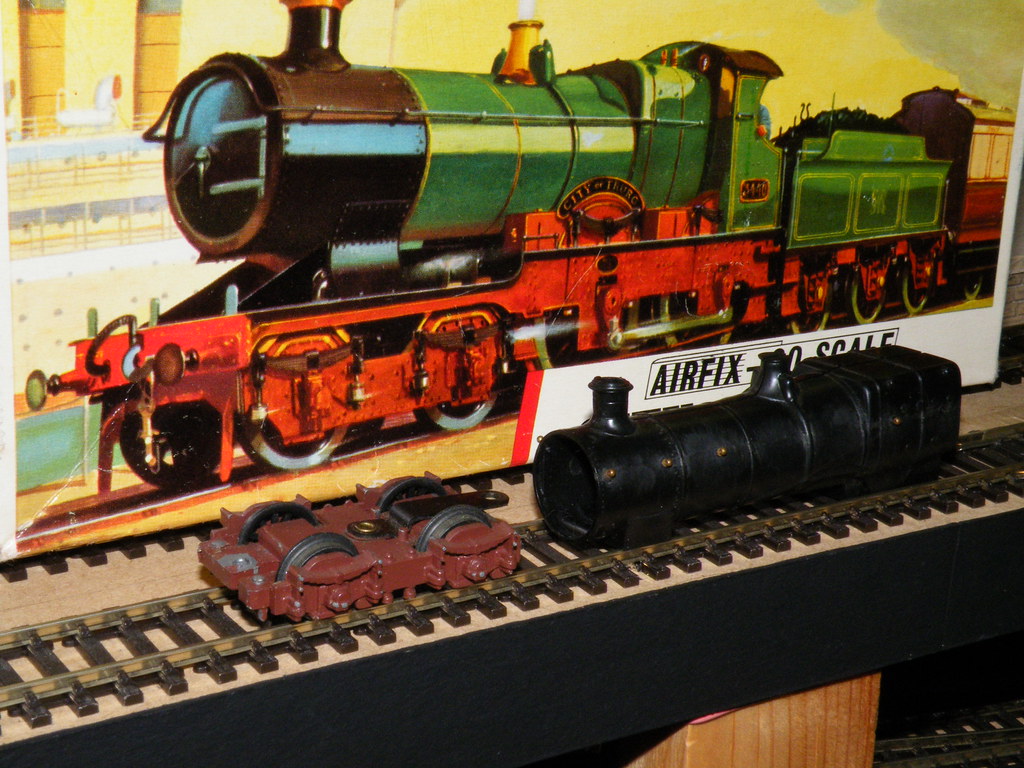
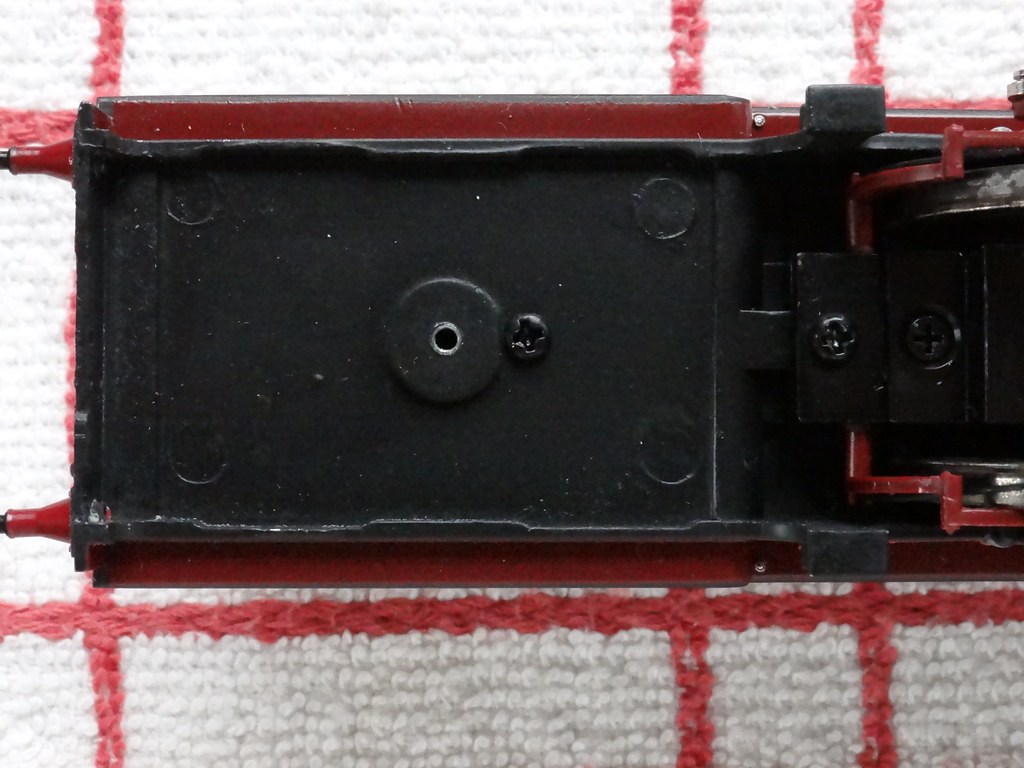

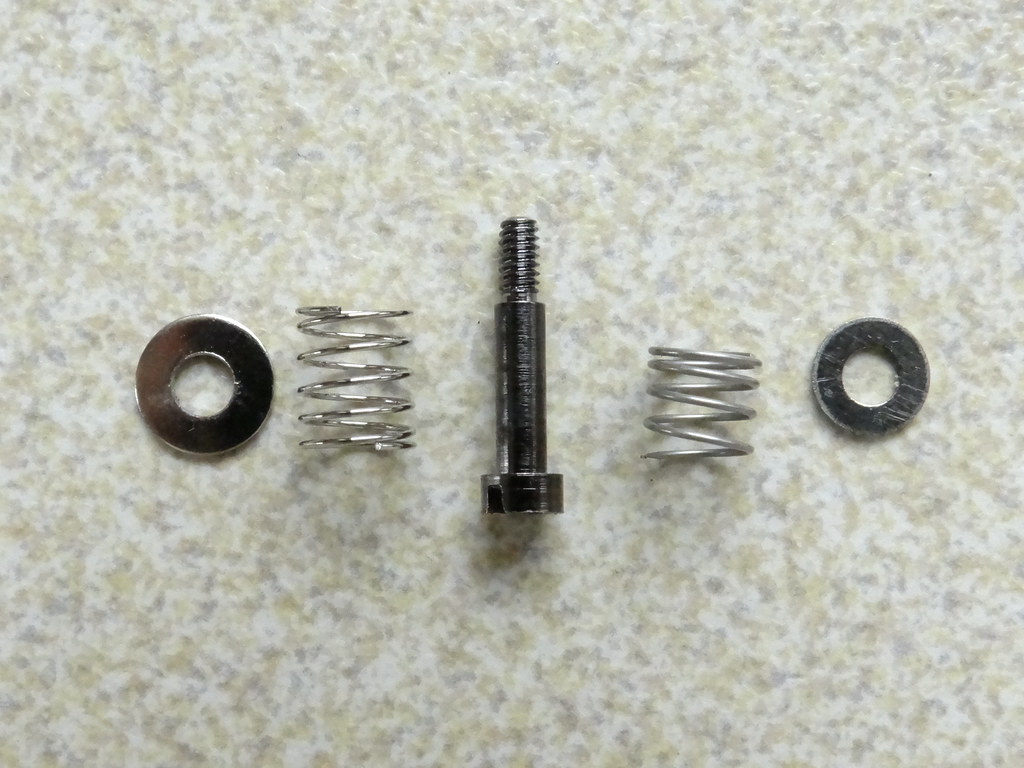
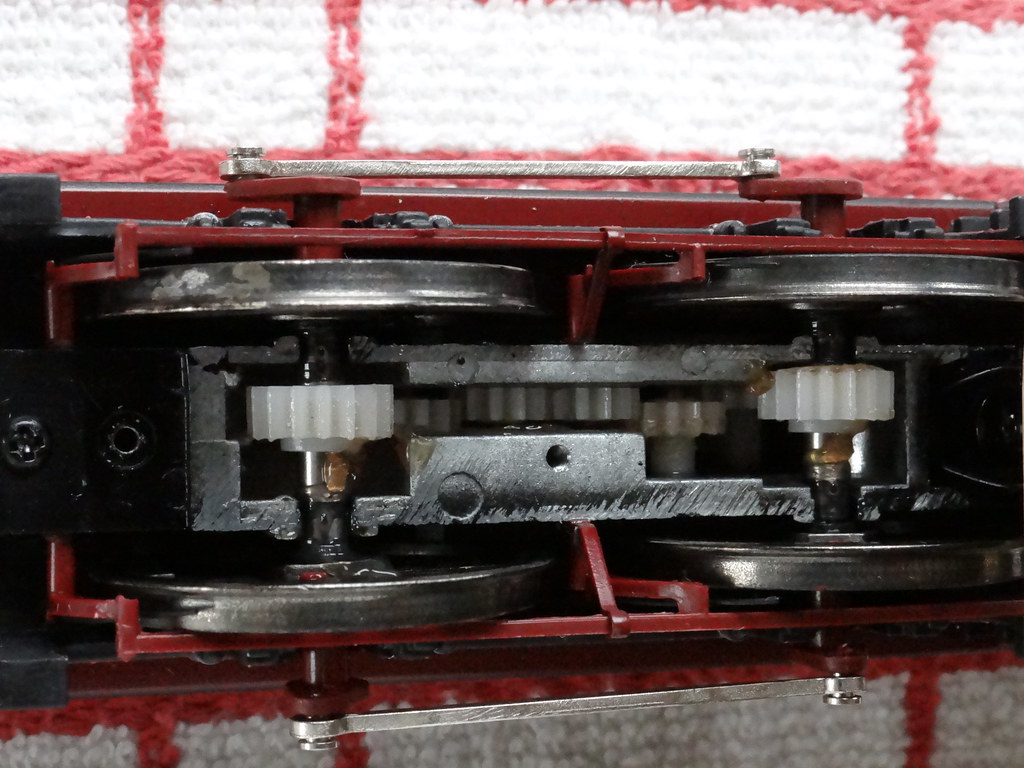
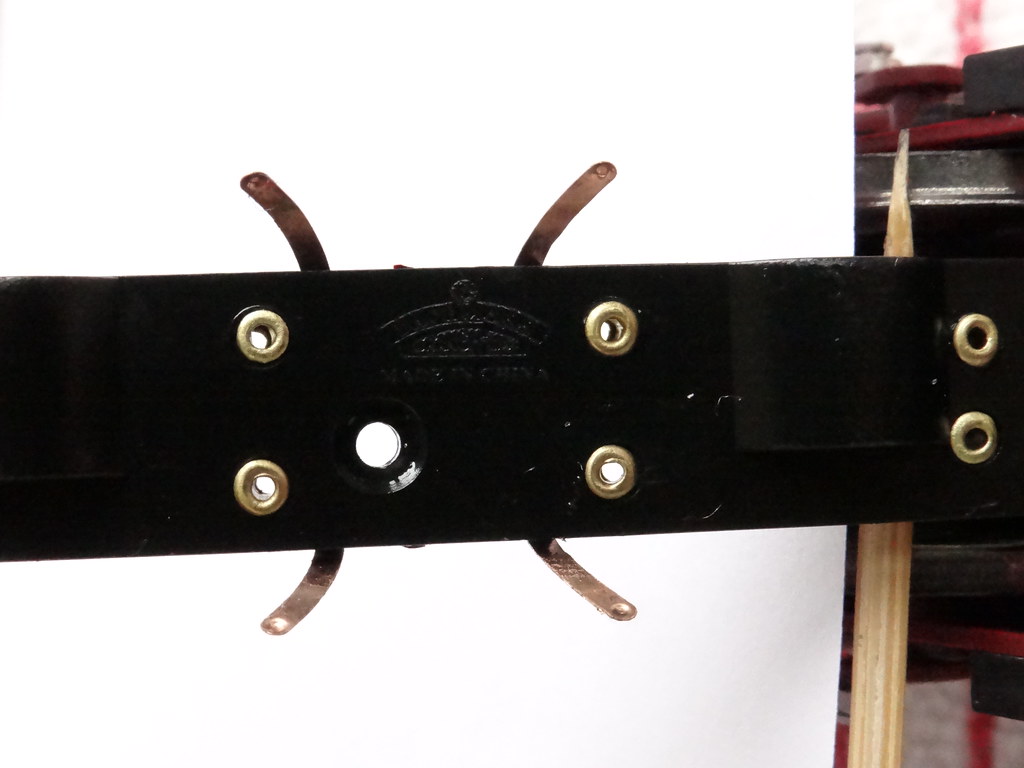

Comments